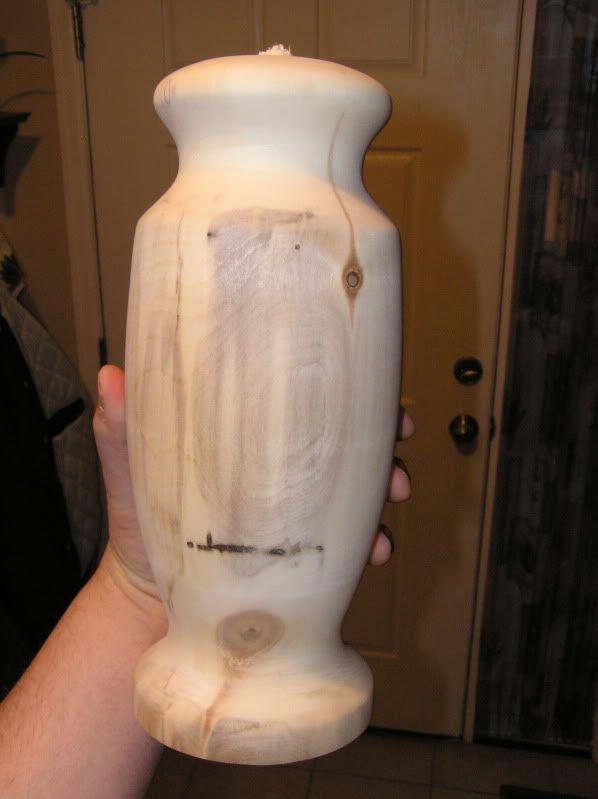Hey all,
I'm excited about turning a lamp out of aspen for our guest room which has a mountain theme to it. This is no ordinary piece of aspen though. I bought it from the old general store in St. Elmo, an old gold mining ghost town (st-elmo dot com). It was in their old shed and looked to be about 100 years old but I can't say for sure. It was definitely very dry, and very soft and prone to tearing. I finally was able to get it to work and it came out just as I had hoped. There are worm holes, stains, and a nice knot, all of whick give it a very rustic look.
So, my question:
What finish would you suggest for this old piece of wood? Oil, satin poly over shellac? Something else?
There's someone who turns vases very similar to this out of fresh wood and sells them at the local tourist attractions like 7 Falls, and Garden Of The Gods. He finishes his in a hard glossy top coat. I'd like the grain to be deep, but don't have confidence in getting a good blemish free gloss. I'm thinking shellac sanding sealer, with clear satin poly on the top. This is what I used for the birch and aspen cabinetry I built into the room and it worked well. I'll try post a picture tonight.
Thoughts? Any experience with this wood?




 Reply With Quote
Reply With Quote







